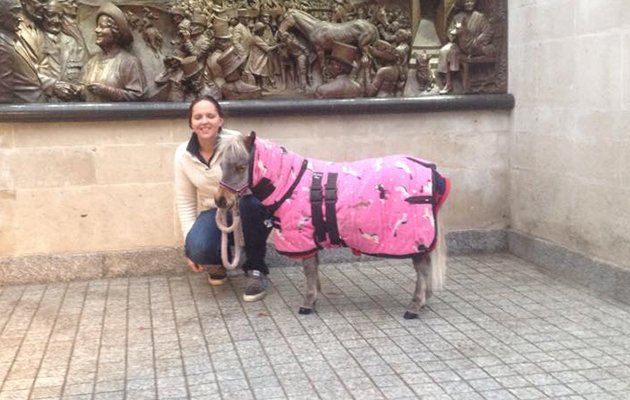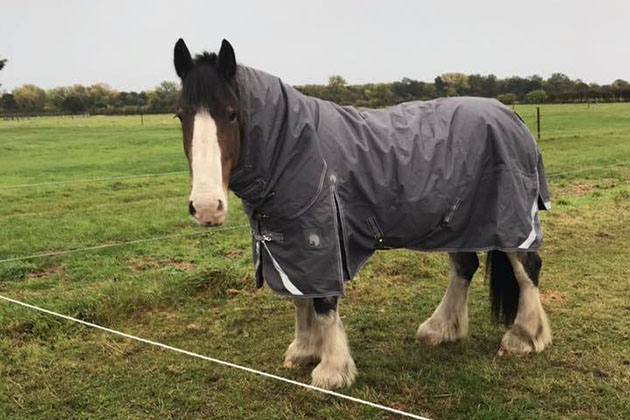
Imagine the reaction if the top three horses at Burghley were all penalised with 15 penalties for missing a flag across country — and so lost their places — especially if all three were considered by the eventing community to have jumped the respective fences sufficiently, albeit at odds with the requirements of the current controversial rule.
This is what happened at Fair Hill, the biggest autumn international in the USA, and understandably the public were outraged. The officials have been put in an impossible position, implementing a rule that, as a body — the International Eventing Officials Club (IEOC) — they oppose.
The FEI eventing committee has made changes to the wording for 2020, but these will not avert a repetition of Fair Hill; their rule still does not allow a horse’s outside front leg to displace a flag.
The FEI eventing committee is made up of six people, one of whom is a rider representative. A couple of years ago, after unanimous discontent over another important decision made without consultation, the committee asked the rider rep to set up a working group of experienced riders to provide feedback on proposals. I was asked to chair this group.
Over the past 14 months I have had over 200 hours of meetings with officials, riders, national federations, fence judges and broadcasters over the 15-penalty rule.
Do we judge style?
The rider group, in conjunction with the Eventing Riders Association, the IEOC and, crucially, 15 national federations, have written to the FEI explicitly supporting an alternative rule that tolerates the outside forelimb displacing the flag. Despite this and our attempts to work with the FEI, the key part of it has so far been rejected by the committee.
At the heart at the issue is whether “style” should be judged across country. The committee have indicated that a jump that is further within the flags should be rewarded over one that is closer to the edge, even when both are “clear” in the traditional sense.
Another difference is that the FEI rule relies on a retrospective video review involving drawing lines on screens, whereas the stakeholders’ proposal is clearer to the fence judge, rider and spectator in real time — if the outside forelimb makes contact with the flag, then all is OK, as long as the back end has jumped the height of the fence.
In other sports, reviews are only workable if the action can be stopped while a decision is made — imagine the outcome of a rugby match being reversed as the crowd are leaving because a try was retrospectively overturned. Under the FEI’s flag wording, the leaderboard often changes after the last horse has crossed the line, which damages the presentation of the sport to the public — a key FEI priority.
Public thinking and the FEI are totally out of sync. If we continue with the FEI rule, ground juries will either refuse to enforce it or we will see decisions which create a public outcry as big prizes are wrongly awarded.
The dramatic alteration to the Fair Hill podium proves how much we need to fix this before the Olympics next year. The rule, in whatever form, will be written into stone at the FEI General Assembly in two weeks’ time. Let’s hope they don’t ram through an unwanted and unworkable rule against the advice of the national federations.
For all the latest equestrian news and reports, don’t miss Horse & Hound magazine, out every Thursday






































 #thebillystud #friendshipgoals
#thebillystud #friendshipgoals



 @freejumpsystem stirrups are secure to ride in for the jumping phases as well as being smart. @libby_law_photography thank you for your support and for capturing memories throughout the season so wonderfully! Rugs are essential and Masta provide comfort alongside being smart for when away at show grounds. Finally thank you as always @wttldevizes. These boys can both look forward to getting home and going on a well earn’t holiday!
@freejumpsystem stirrups are secure to ride in for the jumping phases as well as being smart. @libby_law_photography thank you for your support and for capturing memories throughout the season so wonderfully! Rugs are essential and Masta provide comfort alongside being smart for when away at show grounds. Finally thank you as always @wttldevizes. These boys can both look forward to getting home and going on a well earn’t holiday!
 #spoilthorses #teamburton #schockemoehlesports #kentuckyhorsewear #baileyshorsefeeds
#spoilthorses #teamburton #schockemoehlesports #kentuckyhorsewear #baileyshorsefeeds Happy 3rd anniversary
Happy 3rd anniversary 












